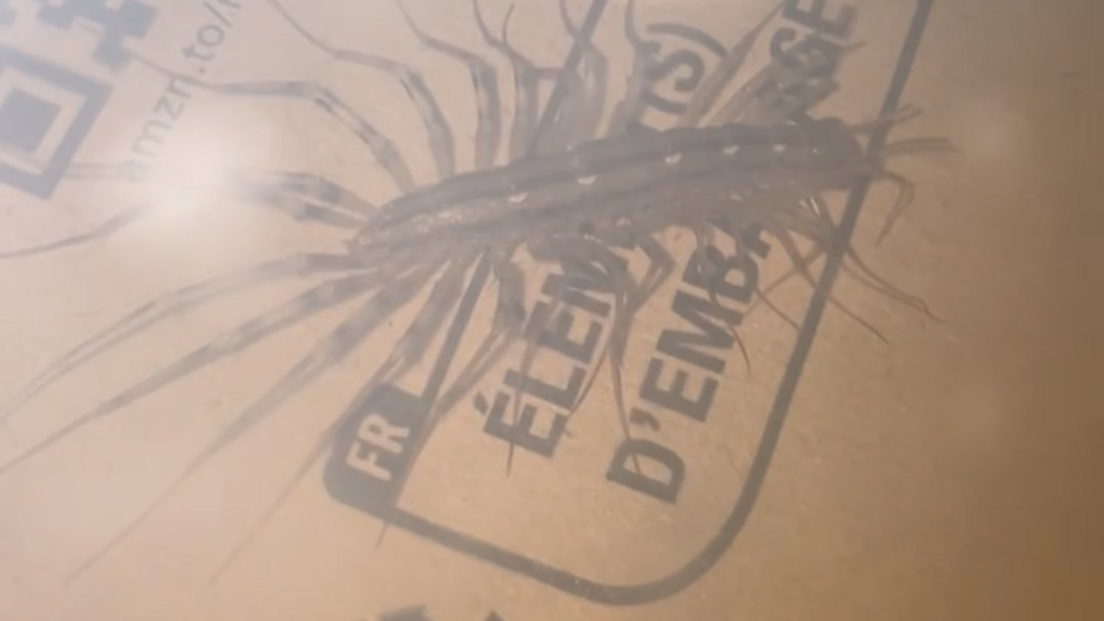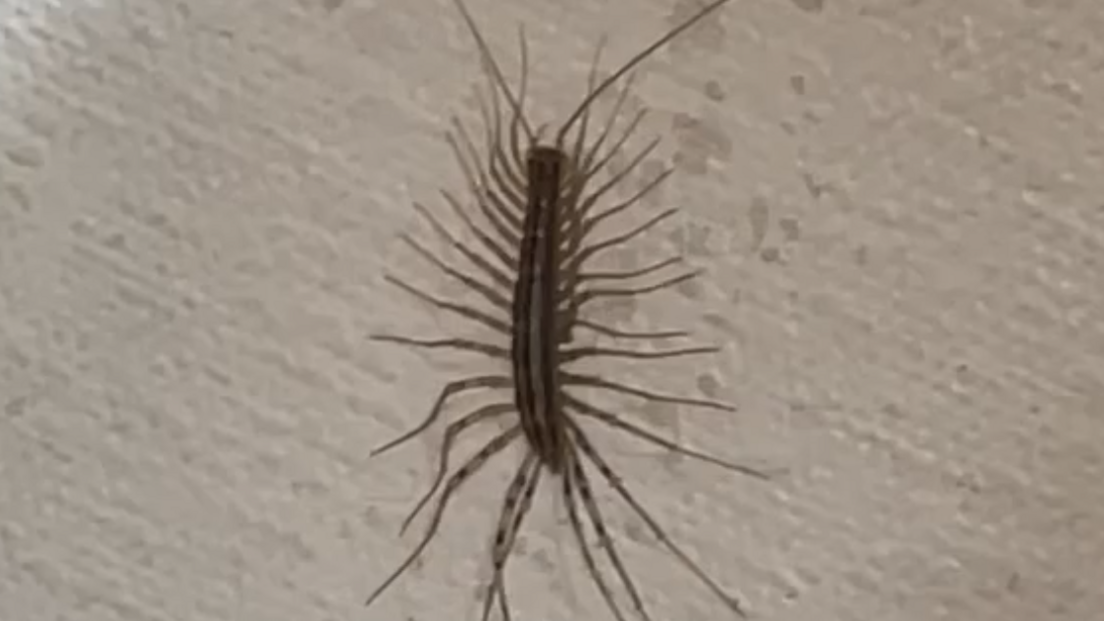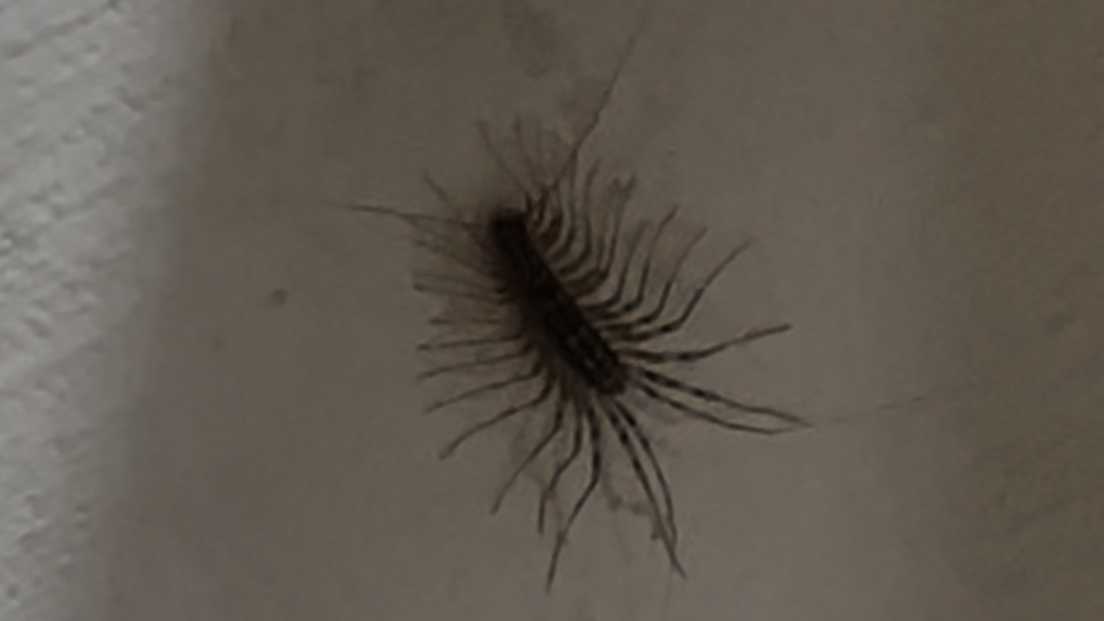Woman finds rare venomous centipede in flat

Orlaith Armour said she spotted the "strange creature" on her kitchen wall
- Published
A young woman has spoken of her shock after finding a venomous centipede in her flat.
Orlaith Armour said she spotted the "strange creature" on her kitchen wall after she returned from a late shift at Wetherspoons.
The 19-year-old later found the many-legged minibeast was a rare Scutigera coleoptrata, which uses venom to kill its prey but is not harmful to humans.
"I had never seen anything like it before. After asking my co-workers, we figured out it was a house centipede," she said.

The species originates from the Mediterranean and, at present, can only survive cold UK winters inside buildings
Steve Gregory, who runs the British Myriapod and Isopod Group's recording scheme, said the Scutigera coleoptrata was commonly known as the house centipede.
He said the species originates from the Mediterranean and, at present, can only survive our cold winters inside buildings.
Mr Gregory said sightings of the insect, which uses its venom to subdue and feed on flies and spiders, are becoming more common in Britain.

Experts say House Centipede may be expanding its range due to climate change
He added that people who end up unintentionally housing one do not not need to worry as they are not dangerous to humans.
"Although once very rare, it is expanding its range, possibly due to climate change," he said.
"There were only three known sightings up to 1990, about 30 sighting between 1990 and 2020, and in 2024 there were over triple this number.
"These are mostly from southern England, but in recent years it has been seen as far north as Lancashire and Yorkshire."
Ms Armour, who moved to Lytham St Annes from Scotland two years ago, said she enlisted a brave colleague to help her catch the creature and released it.
"From what I've learned, house centipedes are harmless and actually beneficial because they prey on other household pests," she said.
Get in touch
Tell us which stories we should cover in Lancashire
Listen to the best of BBC Radio Lancashire on Sounds and follow BBC Lancashire on Facebook, external, X, external and Instagram, external. You can also send story ideas via Whatsapp to 0808 100 2230.
Related topics
More like this story
- Published22 January 2024
